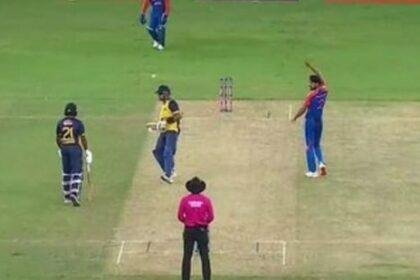Rohit Sharma and Virat Kohli Urged to Play Domestic Cricket for World Cup Aspirations
In a significant development for Indian cricket, the recent announcement of the squad for the upcoming One Day Internationals (ODIs) against Australia has sparked discussions about the future of two of the sport’s biggest stars: Rohit Sharma and Virat Kohli. Both players have been included in the squad, marking their return to international cricket for the first time since the conclusion of the Indian Premier League (IPL) 2025. However, the context surrounding their selection has raised eyebrows, particularly regarding their fitness and readiness for the 2027 ODI World Cup.
Leadership Changes in the Indian Squad
The most notable change in the squad is the removal of Rohit Sharma from the captaincy role, a position he has held with distinction. Shubman Gill has been appointed as the new captain, while Shreyas Iyer steps into the vice-captaincy role. This shift in leadership comes at a time when the Indian cricket team is looking to rejuvenate its approach, especially after a mixed performance in recent international fixtures.
Rohit Sharma, who led India to victory in the Champions Trophy earlier this year, has not yet announced his retirement from ODIs, despite having stepped down from T20I and Test formats. Kohli, too, remains active in ODIs, but both players face increasing scrutiny regarding their fitness and form as they aim for a spot in the next World Cup.
The Call for Domestic Cricket
Former Indian cricketer Irfan Pathan has made headlines with his candid remarks regarding the future of Sharma and Kohli. Speaking on his YouTube channel, Pathan emphasized the necessity for both players to engage in domestic cricket to maintain their game fitness. He stated, “Rohit and Virat want to play in the 2027 World Cup, but game fitness will be a big challenge for them.”
Pathan elaborated on the distinction between general fitness and “game time fitness,” underscoring that merely training is insufficient. “If you are not playing regular cricket, both of them have to ensure some game time. They have to play domestic cricket,” he added. This perspective highlights a growing concern among fans and analysts alike regarding the preparedness of seasoned players who have not been consistently active in competitive matches.
Historical Context and Comparisons
The situation surrounding Sharma and Kohli is reminiscent of past cricketing legends who faced similar crossroads in their careers. For instance, players like Sachin Tendulkar and Rahul Dravid had to navigate the challenges of maintaining form and fitness as they aged. The cricketing world has often seen that players who remain engaged in domestic leagues tend to perform better on the international stage, as they are more attuned to the rigors of competitive play.
Moreover, the Indian domestic circuit has historically been a breeding ground for talent, providing players with the opportunity to hone their skills and adapt to various playing conditions. The Ranji Trophy and other domestic tournaments have produced numerous international stars, and the current scenario serves as a reminder of the importance of these platforms.
Current Squad Dynamics
In addition to the leadership changes, the ODI squad for the Australia series has seen other notable adjustments. Ravindra Jadeja and Varun Chakaravarthy have been dropped, while Jasprit Bumrah has been rested. Hardik Pandya is still recovering from a quadriceps injury, and Rishabh Pant has not yet returned to full fitness following a broken foot. These changes reflect a strategic shift as the team prepares for the future, particularly with the World Cup on the horizon.
The Road Ahead
As Sharma and Kohli gear up for the ODIs against Australia, the pressure to perform is palpable. Their experience and skill are undeniable, but the question remains: can they adapt to the evolving demands of international cricket? The upcoming matches will serve as a litmus test for their readiness and commitment to the sport.
Pathan’s comments resonate with many in the cricketing community, emphasizing that the path to the 2027 World Cup is not just about talent but also about maintaining a competitive edge through regular play. The duo’s participation in domestic cricket could be pivotal, not only for their personal aspirations but also for the overall strength of the Indian team.
Conclusion
The inclusion of Rohit Sharma and Virat Kohli in the ODI squad against Australia marks a significant moment in Indian cricket, but it also raises critical questions about their future in the sport. As they navigate the challenges of fitness and form, the call for them to engage in domestic cricket underscores the importance of staying competitive in a rapidly evolving landscape. With the 2027 ODI World Cup looming, both players have a unique opportunity to solidify their legacies while contributing to the next generation of Indian cricket. The coming weeks will be crucial, not just for their careers, but for the future of the Indian cricket team as a whole.











